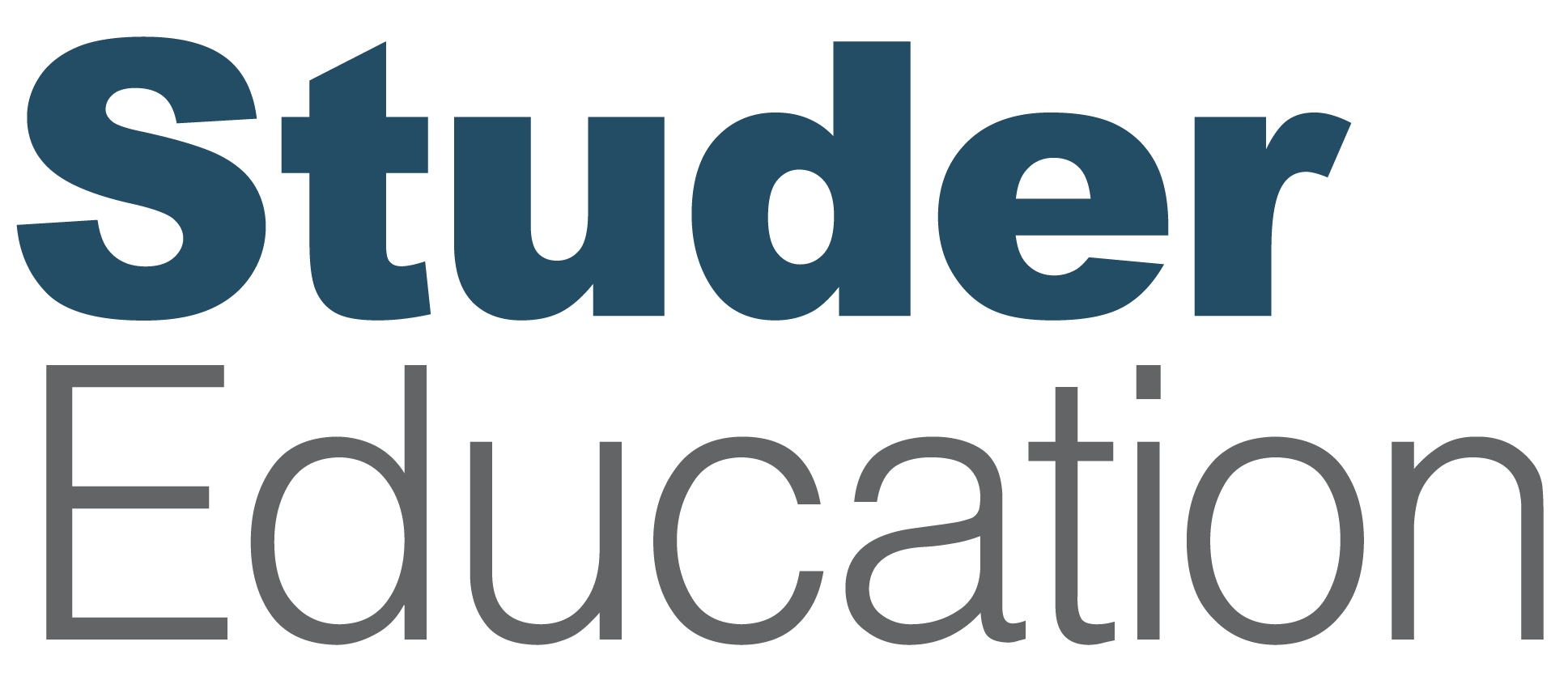
Strong cultures empower winning strategies, and well-executed strategies reinforce strong and healthy cultures. But how do you actually begin the work of transforming a school district’s culture? Join Dr. Adam Leckie, Superintendent of Casa Grande Elementary School District, as he discusses with Dr. Janet Pilcher how centering his faculty, staff, and students is the core of driving substantial improvement. Listen as he unpacks strategies that build this culture, empowering his team to execute with excellence.
This episode addresses questions such as:
- How can a people-first approach be practically implemented to empower those leading daily improvement initiatives?
- What are practical ways to show gratitude and service to the people within a school district?
- How can data-driven insights be used to accurately measure improvement and guide strategic decisions?
DHP K12 Leadership Conference
Our Destination High Performance (DHP) events honor the transformative leaders shaping the future of education. These events highlight how leaders drive continuous improvement, spark innovation, and elevate education through ongoing leadership development and an unwavering commitment to excellence.
Latest Episodes
Adam Leckie: When we think about centering people is really building this organizational culture focused on gratitude and service.
[Intro music plays in the background.]
Introduction
Janet Pilcher: Hello, everyone. Welcome to the Accelerate Your Performance podcast, where we gather each week to share stories of organizational excellence and the strategies we use to get there. I’m your host, Janet Pilcher, founder and president of Studer Education.
And to dive deeper into those strategies, I’m excited to welcome Dr. Adam Leckie back to the show today. Adam is the superintendent of Casa Grande Elementary School District in Casa Grande, Arizona. And last time he was here, I had such a good time talking with him about people-first leadership that I decided to invite him back so we could dive deeper into that topic.
You’re going to love hearing how his district is prioritizing people while weaving together strategy and culture. In fact, that’s a theme that keeps coming up for us lately. And it’s so important because without recognizing the dynamic relationship between culture and strategy, our progress gets hindered. So we’ve got to intentionally do the work to build that connection. And that’s what we’re going to talk about today.
But first, I’d like to make sure you’re signed up for our virtual event that’s coming up from April 15th to 17th. Destination High Performance K-12 Leadership Conference is full of bite sized, high-impact masterclasses and valuable peer discussions delivered right to your laptop or mobile device. You’ll also get access to a virtual event community where you can stay connected to a network of like-minded leaders.
And as a sneak preview, our guest today, Adam, will be there giving a mini masterclass on the very topic we’re discussing. Don’t miss out on the opportunity to connect with us and grow your leadership capacity. Go to studereducation.com/events to register. And I’ll also put a link in the show notes.
So let’s dive in with Adam.
Interview
Janet Pilcher: It’s with great pleasure that I welcome back Dr. Adam Leckie. It’s so good to have you back with us, Adam.
Adam Leckie: Really honored to be here again. Had a great time, Janet, the first time you had me on the podcast and just excited to share more about the leadership and improvement journey our district is on.
Janet Pilcher: Thank you for doing that. And we will be heading into our virtual conference doing something a little bit different where we’re taking about two and a half hours for three days and giving people an opportunity to do some connections during their day of work instead of trying to pull them out.
And one of the things that we’ve done, Adam, is look at some of our leaders who are doing some significant work in particular areas and you and your district, your teams are doing that work. And what I really love about what you all are doing is your, we’re going to talk about focusing on people first, but you’re really blending strategy and culture together through that people work. And so as I talk with you today and ask the questions, it’ll take us through, how do we really focus on people? But focusing on people is also about strategy work.
Adam Leckie: Absolutely.
Janet Pilcher: So let’s start. You talk about relevance of putting people first. We talked about that a little bit on our last episode, that builds alignment and engagement in the district. So start us off, Adam, and talk about why this is important to you.
Adam Leckie: Well, we’re really committed to the belief that organizations are only as good as the people in them. And so we’ve really centered our staff and our employees at the core of our improvement work and really bringing them in in a different way. We really think about it from this leader perspective as putting, you know, people at the center of our decision-making and really building them in order for us to align other strategy within the organization.
And I know we’ve, we use the phrase often “culture before strategy.” I like to think about it as strategy to build culture that leads to greater strategy, and that back-and-forth and interconnectedness is really critical when you think about the importance of building up those that are going to be doing the work of improvement on a day to day basis.
You know, the other thing that really struck me when we think about the purpose and the alignment of the work that we’re doing is really this idea of creating clarity for everyone within the organization, clarity of what that core purpose is, and the vision of what we have for improvement and the ultimate goals of the organization. And I think when you do that, that really allows us to align the employees’ behavior to those goals and purpose in a more clear and important way.
Janet Pilcher: Yeah, I love the way that you phrase the strategy to culture piece. And I think that the other thing just now with the clarity, when we apply or administer the employee engagement survey, something that we usually get back is people aren’t clear about expectations, don’t really understand the direction. And I think, Adam, as you’re talking, my guess would be there, too, is that in order to build that clarity for your teams, your leaders have to have good clarity as well.
Adam Leckie: Yeah, and since they’re the ones that are your primary communicators and messengers within the district, we have to be really intentional about how we’re carrying those pieces of improvement at each level of the organization. So even our school board should have a clarity around what that work looks like on a day-to-day basis, as well as the frontline cafeteria employee, our custodial staff, our bus drivers and aides. So if we can’t speak with one message, it means there’s disconnection within the organization, and we’re not able to get the momentum and impact that we’re hoping for.
Janet Pilcher: Yeah, so good. So let’s talk a little bit about the strategies. What strategies are you learning that are making the difference to put people first? So talk about a couple of your strategies, Adam.
Adam Leckie: Absolutely. Well, again, when we think about centering people is really building this organizational culture focused on gratitude and service. And so we anchor that, of course, in our core values and use those as a leverage point. So that was really our starting place is what, what is it that’s really critical that every person in the organization shows up every day displaying, right? What are the behaviors we’re expecting? And then how do we honor that on a real important and clear basis in terms of recognition when we know that what gets recognized gets repeated.
And so as we think about specific strategies for identifying those that are living our values on a day to day basis, we do those through various means in terms of peer to peer recognition. And I go out and hand deliver certificates and pins aligned to our core values. Often it’s one of my favorite things I do. And it’s really neat because it’s coming from others. It’s not just coming for me; it’s coming from people that are working alongside those individuals. So that’s really important.
But some other specific strategy we use to really center our people in our work is the rounding strategy. And we talk about rounding quite a bit as a, but it’s such a core and critical tactic for improvement, because not only is it helping us identify areas to work on, giving us information and critical feedback to improve, but it’s also allowing employees to feel embedded within the improvement process and have efficacy and what they’re contributing to the overall success of the organization.
And of course, we always ask that question, “who’s been helpful to you?” And giving people an opportunity to have voice and recognize other individuals that have been helpful is really important because we know the research says that one of the best ways for employees to feel connected to the organization and their own well-being is to express gratitude. And so that’s really important for us. So we take every opportunity to do that throughout the year.
Janet Pilcher: Yeah, so good. I’m just curious, in both of those, the rounding and the gratitude and the bright spots, I mean, just all inner working together. But I love the fact that you go out and you give a pin, a gratitude pin on your values. Do you tell them, like, why they’re getting that pin? Is it just the conversation when you’re giving them that, Adam?
Adam Leckie: So what we do, each pin aligns to one of our core values, and those recognitions are submitted by peers. Anybody can submit a recognition for anybody else in the organization.
And what I actually do in every instance that it’s feasible, we have that individual actually give the recognition in that moment. And so they’re the ones that are reading why they felt like their individual is living those core values and what it means to them as a peer. And that’s the powerful part, you know, I can read something and that’s great that the superintendent recognize you.
But when it’s coming from an individual that they’re working alongside every day, or that they feel connected to, it’s just so much more powerful. So we really love the opportunity to allow others to make sure that that gratitude is expressed and felt.
Janet Pilcher: Yeah, thank you for that. I love that. I mean, that is, it’s so simple, yet so powerful. And just coming from the people who are really beginning building that expression. That’s a that’s a great strategy, Adam.
So let’s talk a little bit, dig a little bit deeper. We’ve talked about developing a positive culture and aligning that to your execution work. So talk about the way you use your key priority work, you know, to your scorecard to your improvement process. I’m going to kind of couch those in in the three components. But I know you have, I’ve seen the great slides that you have, and you have good alignment there. So talk us through that.
Adam Leckie: Yeah, and that’s something that we’ve leveraged successfully to create that clarity of message and vision and purpose for others in the organization is having some of those tools to be able to really create structure around our improvement work. And so it’s always informed by what our employees are doing and what our leaders are saying are the things that are of importance for us to work on.
So for instance, with our key priority work, this was really critical for us to use the information and feedback loops surrounding an employee experience surveys to build what our core work is going to be for the year.
What is the most important for us to get right? What are the most important problems for us or the right problems for us to solve for? And that becomes our priority work, which then leads into how do we measure impact? If this is something that’s going to be critical for us to improve, we need to make sure that we measure it because if we can’t measure it, we can’t improve it.
So then that leads then to, you know, how are we then pausing throughout the year to see if the strategies that we’re deploying to make impact on that core priority work are having, or making a difference, having an impact. So we use several different ways to pause and really reflect back on those quarterly, 60, 90 day improvement cycles to see if we’re gaining traction in the things that we’ve said are most important for us to focus on as an organization.
And, you know, this last year, we paused with our entire leadership team with the support of the great Pat Greco to facilitate some of that reflection to see where are the things that we’re actually making a difference with that we can manage up as bright spots. And then where are we getting stuck as an organization and continuing to refine our problem-solving process around those pieces?
And all of that is centered on the people. And so the more that we can embed employees at each level that are closest to the work in each of those improvement cycles and improvement processes, the more that we’re gonna get the real-time feedback we need to make adjustments. What we don’t wanna do is we don’t wanna do these huge, big initiatives, have all of these complex goals, and then not measure impact and make small adjustments along the way. We’re fond of saying small data, small action equals impact. And that’s what we’re shooting for.
So the more that we can reflect on that, the more that we’re gonna make progress and not just measure at the end of the year whether or not we’ve met our goals.
Janet Pilcher: Yeah, so good. And I love the small, it’s little pieces at a time and continuous conversation connected to that.
Just curious, Adam, as you’re collecting the information from those multiple sources, are you structuring, I’m envisioning structuring your leadership team meetings around that data so that you’re analyzing it in those short cycles, but there’s gotta be a way, too, that you’re probably just consistently coming together to collate that information.
Adam Leckie: Yeah, we try to integrate all the information we collect as a leadership team and use that to inform next actions. And so that takes the form of a couple of different pieces.
We do weekly huddles with our leadership team and looking at data, what’s working, what’s not around our key priority work. We also do site visits with our executive leadership team on a weekly basis to each of the schools. And we really talk through what the data is telling them, where are they seeing success, where are they having some challenges?
And then the executive leadership’s team’s responsibilities, really to look at that from a systems level. Where can we point to that we’re actually getting a lot of traction and what can we learn from that so that other schools and leaders can have the opportunity to also implement strategies that are having the effect that we want.
Janet Pilcher: Yeah, so good. And that sometimes I think that’s the big question. You know, we have the system piece and then there’s the execution and then what does that look like? You know, I mean, how is that collated?
I’ve been, I’ve just been thinking in terms of what’s the strand that we focus on that we pull through. And it’s collecting the data, analyzing the data, collating and synthesizing and taking action and then continuing to map that progress. Like that’s the simplicity in my mind of most anything that we do tactically has that thread that runs through it.
And the reason I asked that question, I was just mapping that out and working through it this weekend in a more detailed way. And I just thought to myself, “we don’t teach as much of collating and synthesizing the information, you know, as probably we need to,” right? You know, that was kind of my reflection because we can’t leave that to chance. Because if we leave that part to chance, then we may be taking action, but we’re not basically pulling all of those pieces together to really understand it from that integrated standpoint.
So thank you for sharing that. I think that’s really an important process and not one that we, I don’t think you may disagree with me, but I don’t think that’s one that we naturally just do in our organizations.
Adam Leckie: No, I would agree with you. And the other thing that we’ve found, too, is a lot of our challenges or things that get us stuck is the complexity of the data that we collect. And really, when you talk about integration and sense-making around the information, that’s where we got to prioritize. Because we’re inundated with a lot of information and the more feedback we collect, the more that data becomes contextualized, but it also makes it more complicated and we have lots of quantitative measures as an industry and organization.
And so what we’re doing with our leadership is really trying to say what is most important that’s gonna tell us whether or not we’re making progress towards our goals. And that’s the data we wanna collect. When we talk about small data, we’re really prioritizing that for improvement as opposed to everything because if we get inundated and overwhelmed by the data, then it doesn’t serve a purpose for improvement. And that’s the challenge is really refining what’s gonna be critical for us to identify and then how do we make sense of it? What is it telling us? What’s the story of the data so that we can be informed in terms of what’s our next step as an organization?
Janet Pilcher: Yeah, so good, so good. Thank you. Thank you for that added piece there to help me kind of work through my own thinking, Adam.
So let’s go, let’s talk a little bit more about the scorecard. That’s a tool that really helps your team members reflect on progress. So talk about how your improvement process connects to putting people first and increasing the impact of how you’re moving toward your goals.
Adam Leckie: Yeah, the scorecard’s been really helpful in terms of us narrowing our focus to what’s most important and then identifying what’s gonna be measured so that we know we’re making progress. And when we think about how that centers people in the problem-solving approach and what strategies we use, it’s really about being informed by those closest to the work.
And so, what are the people telling us that are getting them stuck in their day-to-day work that’s gonna have a larger impact on the organization? And so one of, great example I have is from our facilities department. And they initially, our facilities director is an amazing individual, hardworking. They do a lot of great work in the district. But it took some time for us to think through what is the scorecard process? How does the problem-solving approach look in a facilities department? What does that mean in terms of behaviors and shifting focus?
And really what our director did, which was a great job, is really start to collect that information from his people in a different way than he had before, which gave him insight into what were the things that were getting in the way for them and their department for larger goals that the organization had.
And so then he used them in that approach to problem-solving to figure out what the next step was gonna be. How do we solve this problem, right? It’s not coming from me as a leader. It’s coming from all of us collectively because we have different lenses that we integrate our perspectives so that the solutions are much better.
And so he’s been able to really grasp a lot of those key priority strategies to make impact. And it’s been amazing to see how really seamless the department that we typically wouldn’t, because it’s on the operational side, think about an improvement from a school level’s perspective, but the impact it’s having on the organization. So it’s been, it’s been impressive.
Janet Pilcher: Yeah. And as you’re talking about that, I always connect back to, I love the idea that the district department leaders and the teams are highly engaged. And when people talk about, you know, “how do we really build morale? How do we build engagement? How do we get people connected?” I mean, this is it, right? This is exactly how you do that. It’s that strategy to culture piece in connecting with people closest to the work around those measures and goals because people want to be successful, Adam. [laughs] I mean, I think we see that all the time, and most people want to be successful. So nice work there.
Adam Leckie: Thank you. Yeah, it’s really empowering for our staffs to feel like they can contribute to the, to these larger systemic challenges that we experience. And even when it’s a small thing, their voice being heard really empowers them to be connected to the organization. We found that to be helpful.
Janet Pilcher: Yeah, so good. So as we close today, if you would, talk about the impact that you’re seeing, you know, take hold. What do you see as results and how is that making a difference in changing your organization?
Adam Leckie: So thinking about this from kind of a high level, our culture is really shifted. And so we’re thinking about how every individual in our organization feels like they’re a part of the district in a really important way. And that’s huge. You start from that lens, because we’ve even passed a board policy to say everyone in our district is an improver from the board room all the way down to the classroom. And that includes students.
And so when we think about that mindset, it really helps us shift our work and really embed and connect with the specific strategies and initiatives in a different way than we have before. Because we’re all thinking about this from a different perspective. So that’s been really important.
We’re starting to really see shifts in measures like our employee experience survey and the ways in which employees feel connected to the organization. You know, what are the things that are getting them stuck when we focus on communication and connection? We see the shifts that employees have in terms of their perspective on what is important. What are the things that we’re trying to get right in the organization and just feel more connected to the overall purpose of the district.
So, and then really, I always try to end with this connection to our students. And I mentioned that they’re improvers, too. And the power as a superintendent is always to see our kids owning improvement work, and they may not be able to put the same names to it as we do, but when you see them giving feedback to teachers and cycles of improvement connected to learning, we know that it’s really embedding in a sustainable and important way throughout every classroom, department, office throughout the district. And that’s the power, right? And in organizations completely from wall to wall built around an improvement mindset. And that’s exciting.
Janet Pilcher: Yeah, it truly is. And when we think about, sometimes I think about the work and what we’ve been talking about today, Adam, it’s the way we give feedback, the way we gain input, the conversations we have. We’re all educators and all teachers, and in many ways, it’s just taking what we know that works best in those feedback loops and continuously engaging in conversations around that data that builds that momentum forward. And that’s what good teachers do. And really empowering what you all are doing and empowering students to be part of that conversation builds their engagement in ways like we’ve not seen before.
So, I just appreciate what you all are doing really from the boardroom to the classroom in the improvement work. And I look forward to you sharing your mini-masterclass with our virtual participants in the middle of April. So thank you so much for being part of our show today.
Adam Leckie: This was great, Janet. Thank you very much for the opportunity.
Conclusion
[Outro music plays in the background.]
Janet Pilcher: The impact Adam’s seeing in his district from improved employee engagement to students owning their learning is truly inspiring. Thank you, Adam, for being with us and sharing how gratitude, rounding, and data-driven decision-making can lead to significant cultural and strategic shifts. I’m grateful for your time and I’m thrilled that you’ll be sharing even more at our Destination High Performance K-12 Leadership Conference. One more time for everyone listening. That’s studereducation.com/events to join us. I’m looking forward to seeing you there.
As we move forward into the next week, let’s carry the message of empowerment with us and remember that empowering our people to empower our students is what this work is all about.
As always, I thank you for tuning in to this episode of Accelerate Your Performance. I look forward to seeing you next time as we continue to work together to achieve organizational excellence. Have a great week, everyone.
Featured Guest

Dr. Adam Leckie
Superintendent • Casa Grande Elementary School District, AZ
-
Janet Pilcher President








